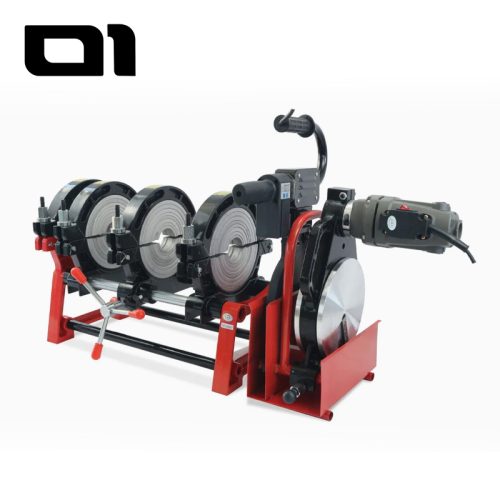In the world of construction and plumbing, the ability to join pipes securely is crucial. High-Density Polyethylene (HDPE) pipes have become a popular choice due to their durability, flexibility, and resistance to corrosion. A key tool in ensuring the effective joining of these pipes is the HDPE hydraulic butt joint machine. Let’s delve into what this machine is, how it works, and why it’s essential for welding HDPE pipes.
What Is HDPE Pipe Welding?
HDPE pipe welding is a method used to join two pieces of polyethylene pipe. This process involves heating the pipe ends and pressing them together to form a seamless, permanent bond. The result is a single, continuous piece of pipe that is just as strong as the original material. This technique is particularly useful in applications where a secure, leak-proof connection is necessary, such as in water supply systems, gas pipelines, and sewage networks.
What Is a Hydraulic Butt Joint Machine?
A hydraulic butt joint machine is a specialized piece of equipment designed for welding HDPE pipes. The “butt joint” refers to the type of weld created when the ends of two pipes are joined directly together without the use of additional fittings. The machine uses hydraulic power to apply the necessary force to press the pipe ends together after they have been heated.
Key Components of an HDPE Hydraulic Butt Joint Machine
Heating Plate
The heating plate is used to warm the ends of the pipes to the appropriate temperature for welding. This is a critical step, as the heat softens the pipe material, allowing it to fuse together when pressure is applied.
Hydraulic Unit
The hydraulic unit provides the force needed to press the pipe ends together. It ensures that the pressure applied is consistent and sufficient to create a strong bond.
Clamps
Clamps hold the pipes in place during the welding process. They ensure that the pipes are aligned correctly and maintain their position as the hydraulic unit applies pressure.
Control Panel
The control panel allows the operator to manage the machine’s functions, such as temperature settings and pressure levels. It is crucial for ensuring that the welding process is carried out under the correct conditions.
How the Welding Process Works
Step 1: Preparation and Alignment
Before welding, the pipe ends must be cleaned and aligned. Dirt and debris can interfere with the welding process, so it’s essential to ensure that the pipe ends are clean. The pipes are then clamped into the machine to hold them in place.
Step 2: Heating
The heating plate is inserted between the pipe ends and heated to the desired temperature. This softens the pipe material, preparing it for fusion.
Step 3: Jointing Under Pressure
Once the pipe ends are adequately heated, the heating plate is removed, and the hydraulic unit presses the softened ends together. The pressure is maintained for a set period to allow the material to fuse and form a strong bond.
Step 4: Cooling
After the pipes have been joined, they must be left to cool. This ensures that the bond is secure and the pipes are ready for use.
Advantages of Using an HDPE Hydraulic Butt Joint Machine
Using an HDPE hydraulic butt joint machine offers multiple benefits that directly improve welding efficiency and pipeline performance. First, the machine ensures high welding quality by maintaining precise control over temperature and pressure, producing uniform and reliable joints—critical in environments where pipeline integrity is non-negotiable.
In addition, its automated operation significantly reduces manual labor and welding time, delivering notable cost and time savings, especially on large-scale projects. The equipment is also highly versatile, capable of welding pipes in different diameters, making it suitable for a wide range of applications.
Most importantly, the resulting joints are exceptionally strong and durable, enabling the welded pipelines to withstand demanding conditions in sectors such as water supply, gas distribution, and industrial systems.
Common Applications of Welded HDPE Pipes
Water Supply Systems
HDPE pipes are ideal for transporting potable water due to their non-corrosive nature and ability to maintain water purity.
Gas Pipelines
The strength and flexibility of HDPE pipes make them suitable for safely transporting natural gas.
Sewage and Wastewater Systems
HDPE pipes are resistant to chemicals and abrasion, making them an excellent choice for sewage and wastewater systems.
Industrial Fluid Transport
In industrial settings, HDPE pipes can be used to transport a wide range of fluids, including chemicals and slurries.
Conclusion
The HDPE hydraulic butt joint machine is an indispensable tool for anyone working with HDPE pipes. Its ability to create strong, reliable joints quickly and efficiently makes it a valuable asset in construction, plumbing, and various industrial applications. By understanding how this machine works and the benefits it offers, you can ensure that your HDPE pipe welding projects are successful and meet the highest standards of quality and durability.









